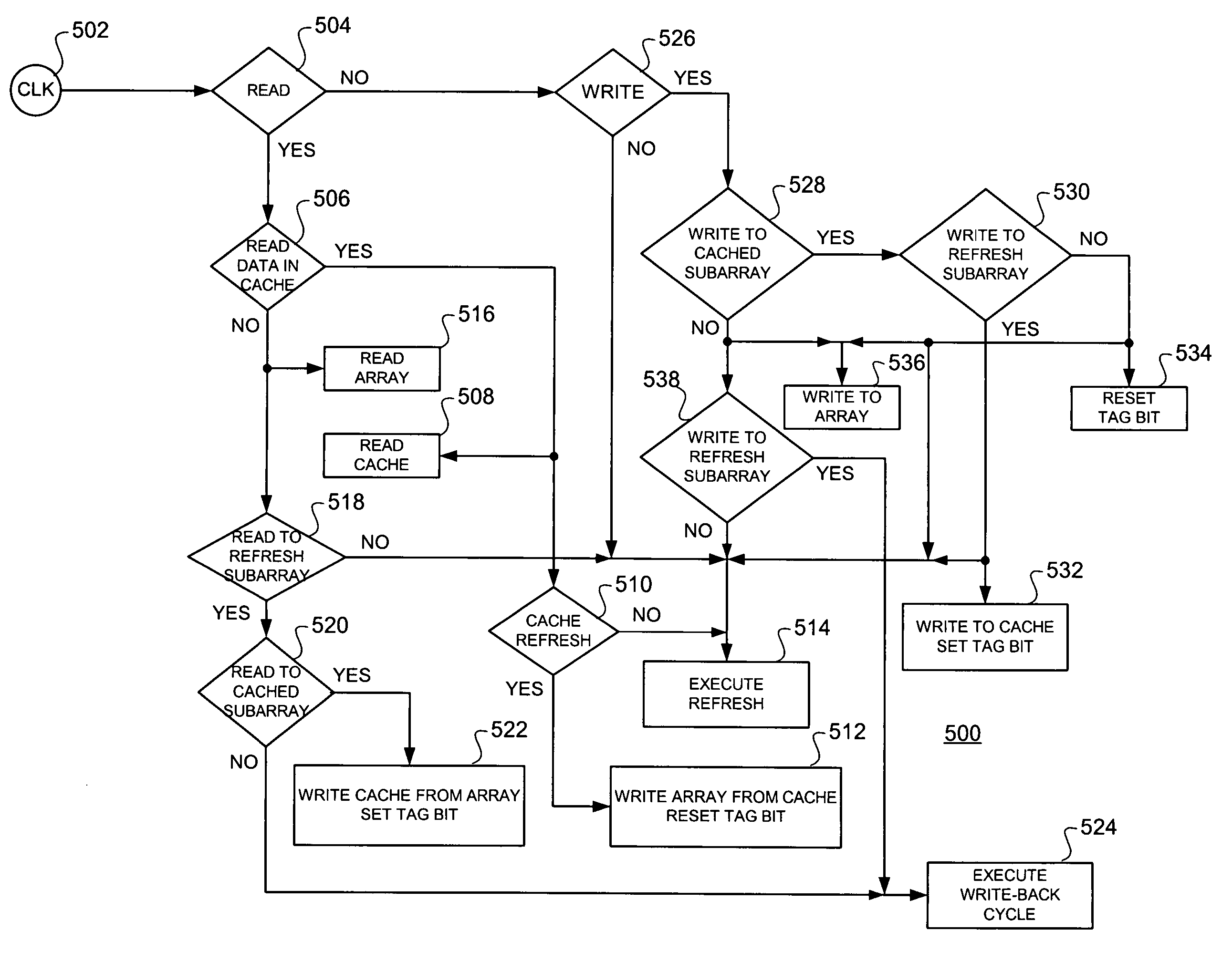Static random access memory (SRAM) compatible, high availability memory array and method employing synchronous dynamic random access memory (DRAM) in conjunction with a single DRAM cache and tag
a dynamic random access memory and synchronous technology, applied in the field of integrated circuit memory devices, to achieve the effect of preventing data loss
- Summary
- Abstract
- Description
- Claims
- Application Information
AI Technical Summary
Benefits of technology
Problems solved by technology
Method used
Image
Examples
Embodiment Construction
[0044] With reference now to FIG. 1, a functional block diagram of a conventional memory 100 is shown illustrating the data and address bussing thereof and wherein refresh operations are not hidden. The conventional DRAM memory 100 comprises, in pertinent part, a 1 Meg memory array 102 comprising 16 separate 64 K subarrays 1040 through 10415 (subarray 0> through subarray 15>) as illustrated.
[0045] A data input / output (I / O) block 106 is coupled to the various subarrays 1040 through 10415 by means of a global data read / write bus 108. Memory locations within the subarrays 1040 through 10415 are addressed by means of an address bus 110 or a refresh address determined by a refresh counter 112 which provides a refresh address on bus 114 coupled to the address bus 110. Addresses to be read or written within the memory array 102 are input on address bus 116 (A14:0>) for input to an address control block 118, which is, in turn, coupled to the address bus 110. Data read from, or to be writte...
PUM
 Login to View More
Login to View More Abstract
Description
Claims
Application Information
 Login to View More
Login to View More - R&D
- Intellectual Property
- Life Sciences
- Materials
- Tech Scout
- Unparalleled Data Quality
- Higher Quality Content
- 60% Fewer Hallucinations
Browse by: Latest US Patents, China's latest patents, Technical Efficacy Thesaurus, Application Domain, Technology Topic, Popular Technical Reports.
© 2025 PatSnap. All rights reserved.Legal|Privacy policy|Modern Slavery Act Transparency Statement|Sitemap|About US| Contact US: help@patsnap.com



